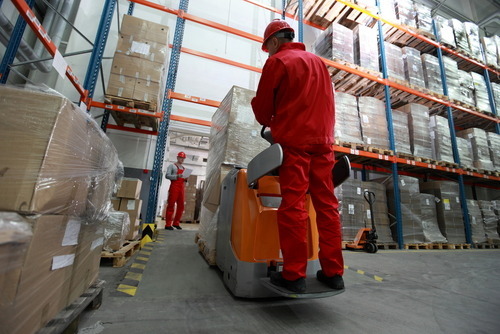By Alicia Fiorletta, Senior Editor

Retail execs, you can now breathe a collective sigh of relief. You have completed another holiday season – possibly the most demanding yet – and you made it out unscathed, with customer satisfaction still in tact. (Generally speaking, of course.)
Last year, many retailers were left scrambling to make up for packages that didn’t get delivered in time for the holiday. But this year, only 7% of packages ordered online did not arrive by their promised delivery date, according to StellaService research, compared with 12% in 2013.
For the retailers that had difficulty keeping their delivery promises, what was the cause? Were the deadlines too tight? Were the processes inefficient? Was there not enough manpower?
Supply chain hiccups can be caused by a multitude of factors, according to Todd Miller, who is a Vice President at private equity firm Sterling Partners. But the primary culprit is poor inventory visibility.
Although retailers are trying to reconfigure the supply chain to create a truly omnichannel experience, “they don’t have the back-end infrastructure,” Miller said. They can’t identify “where inventory is located across fulfillment centers and coordinate that with how the supply chain is configured to stores. While a handful of retailers have that visibility, most still see it as a big inhibitor for providing a true omnichannel experience."
The fact that consumers’ behaviors are constantly changing also influences retailers’ constant scrambling to keep pace.
"It’s not exactly clear what the standard customer is going to demand next,” Miller said. “I’ve been hearing that two-day ground is going to be the new standard, and a lot of retailers are trying to figure out how to get to next-day or same-day shipping in certain markets.”
Amazon Prime has undoubtedly set the stage for consumers’ delivery expectations and retailers’ supply chain investments, but the reality is the long-term value of faster delivery speeds relies on the type of product being sold.
“For some products, same-day or two-day shipping makes sense,” Miller noted. “But for others, it’s such a high cost where I don’t think it makes much sense."
Before moving forward with new order delivery and fulfillment practices, retailers need to assess the overall cost of all venues, whether it’s sending an item to the store for the consumer to pickup, or sending an item to a DC and having it delivered.
"It’s different for every retailer,” Miller said. “For example, the costs are very different if you’re selling washing machines or if you’re selling jewelry."
One thing all retailers should consider – especially during peak periods like the holiday season – is elongating promotional periods. After all, there is only so much demand supply chains can handle. And the more time a retailer has to fulfill the order, the less chance for error and lower the cost for consumers and retailers alike.
Using the holiday season as an example, Miller noted that it would be ideal to run promotions and incent consumer behavior in October, rather than November or December.
"It costs more money in the two or three-week period before Christmas simply because it costs more money to get products to consumers,” Miller said. “If retailers could get consumers to shop earlier, it would be better for the supply chain, and ultimately, would allow retailers to fulfill product cheaper and pass that savings on to the consumer."
Have you garnered any supply chain lessons learned after the holiday season? Do you have any goals in place? Share your comments in the comments section below!






